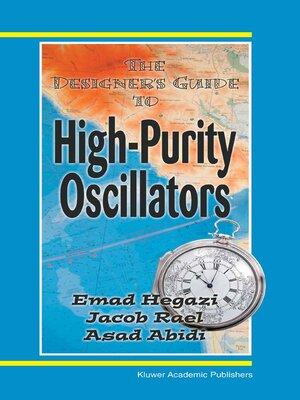The Designer's Guide to High-Purity Oscillators
ebook ∣ The Designer's Guide Book
By Emad Eldin Hegazi

Sign up to save your library
With an OverDrive account, you can save your favorite libraries for at-a-glance information about availability. Find out more about OverDrive accounts.
Find this title in Libby, the library reading app by OverDrive.



Search for a digital library with this title
Title found at these libraries:
| Library Name | Distance |
|---|---|
| Loading... |
try to predict it using mathematical expressions. His heuristic model without mathematical proof is almost universally accepted. However, it entails a c- cuit specific noise factor that is not known a priori and so is not predictive. In this work, we attempt to address the topic of oscillator design from a diff- ent perspective. By introducing a new paradigm that accurately captures the subtleties of phase noise we try to answer the question: 'why do oscillators behave in a particular way?' and 'what can be done to build an optimum design?' It is also hoped that the paradigm is useful in other areas of circuit design such as frequency synthesis and clock recovery. In Chapter 1, a general introduction and motivation to the subject is presented. Chapter 2 summarizes the fundamentals of phase noise and timing jitter and discusses earlier works on oscillator's phase noise analysis. Chapter 3 and Chapter 4 analyze the physical mechanisms behind phase noise generation in current-biased and Colpitts oscillators. Chapter 5 discusses design trade-offs and new techniques in LC oscillator design that allows optimal design. Chapter 6 and Chapter 7 discuss a topic that is typically ignored in oscillator design. That is flicker noise in LC oscillators. Finally, Chapter 8 is dedicated to the complete analysis of the role of varactors both in tuning and AM-FM noise conversion.







